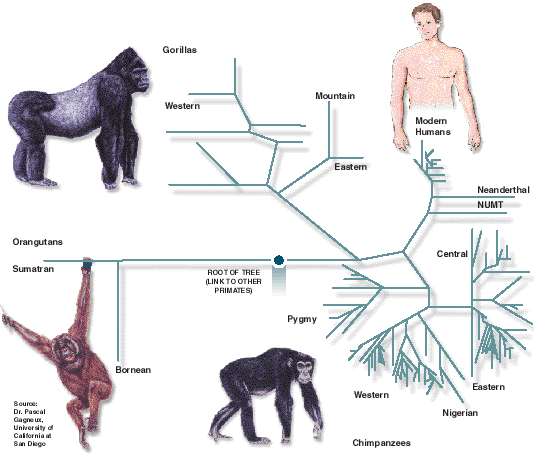
This family tree shows the relationship between some intimately related species: the great apes and humans. The tree is constructed on the basis of the comparative analysis of a single genetic region, part of the DNA of the cellular organelles known as mitochondria. Trees generated from other regions of DNA is likely to differ in some details. The length of the branches is proportional to the number of genetic changes between one species and another, based on comparisons of their mitochondrial DNA. (The angles between the branches have no meaning.)

The Neanderthal DNA comes from a single sample extracted in 1997 from a fossil Neanderthal bone about 30,000 years old. NUMT refers to a copy of the mitochondrial DNA that got accidentally copied into the DNA of the cell nucleus after the human line branched off from the apes but apparently before Neanderthals and modern humans split apart.
The tree appears in an article in the April 1999 issue of Proceedings of the National Academy of Sciences in an article by Dr. Pascal Gagneux of the University of California at San Diego and colleagues. Its principal new element is the copious data from chimpanzees. The DNA was extracted from single hairs shed in the high tree nests that chimpanzees make every night. Dr. Gagneux retrieved the hairs by climbing to 137 nests by rope -- nests that were often 100 feet or more above the ground.